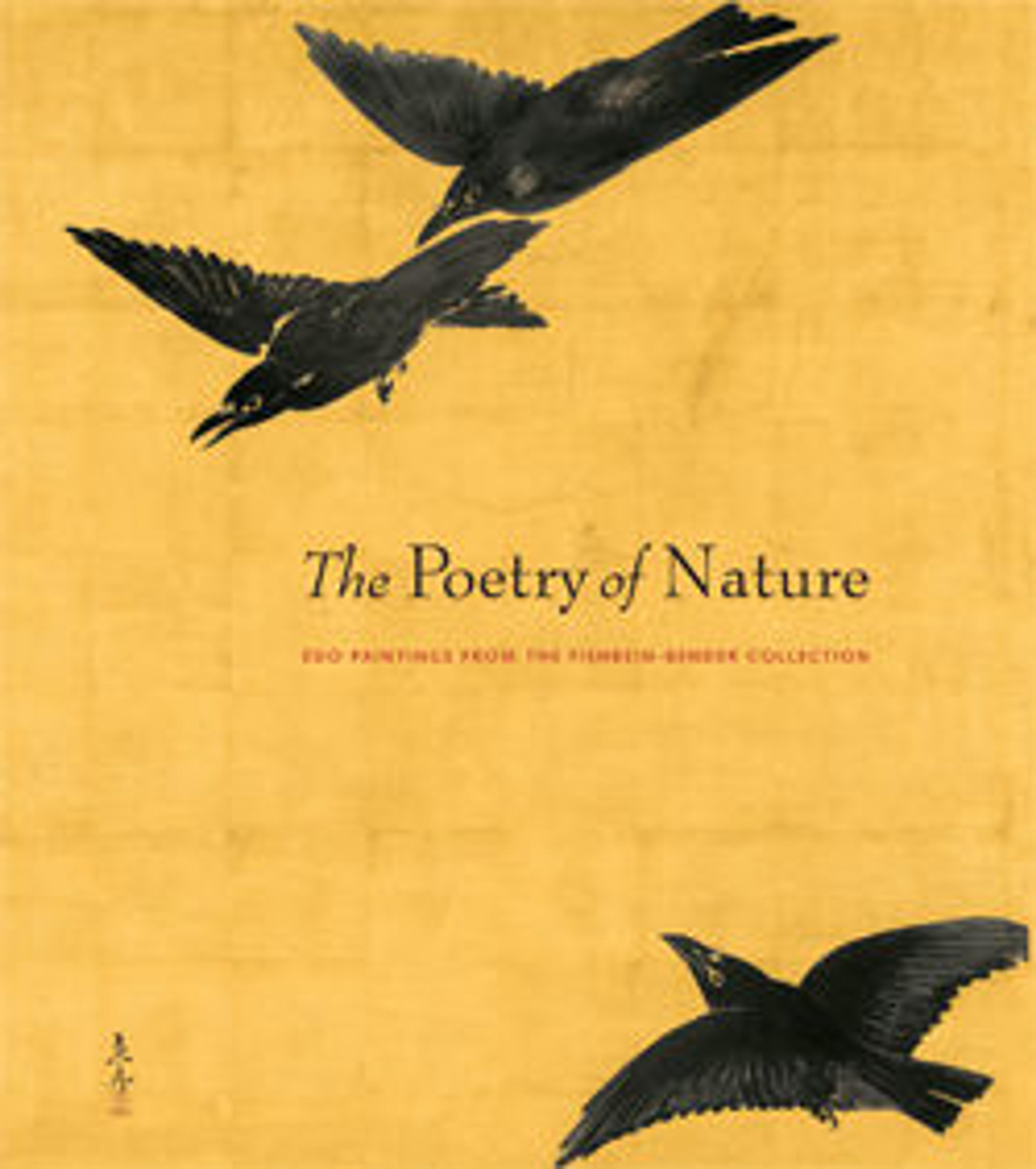Blossoming Cherry Trees
Paintings of cherry trees in isolation are surprisingly rare, considering they are the quintessential symbol of Japan. The cherry tree serves in literature and painting as an emblem of spring or an allusion to certain famous sites (meisho) such as Yoshino, near Nara. This small-screen composition—which originally probably lacked the wide silver band at the bottom—illustrates Sakai Hōitsu’s unerring sense of space, created here by an expanse of gold leaf.
Hōitsu, an ardent admirer of the Kyoto artist Ogata Kōrin (1658–1716), strove to transplant the Rinpa aesthetic to Edo. Hōitsu was trained in painting as well as in the literary arts of haikai (seventeen-syllable seasonal verse) and kyōka (thirty-one-syllable witty verse). His immersion in haikai, with its sensitivity to the seasons, is reflected in his attention to individual floral subjects not central to the traditional repertory of mainstream painting studios.
Hōitsu, an ardent admirer of the Kyoto artist Ogata Kōrin (1658–1716), strove to transplant the Rinpa aesthetic to Edo. Hōitsu was trained in painting as well as in the literary arts of haikai (seventeen-syllable seasonal verse) and kyōka (thirty-one-syllable witty verse). His immersion in haikai, with its sensitivity to the seasons, is reflected in his attention to individual floral subjects not central to the traditional repertory of mainstream painting studios.
Artwork Details
- 酒井抱一筆 桜図屏風
- Title:Blossoming Cherry Trees
- Artist:Sakai Hōitsu (Japanese, 1761–1828)
- Period:Edo period (1615–1868)
- Date:ca. 1805
- Culture:Japan
- Medium:Pair of six-panel folding screens; ink, color, and gold leaf on paper
- Dimensions:Image: 38 x 82 3/16 in. (96.5 x 208.8 cm)
Overall with mounting: 39 9/16 × 83 3/4 in. (100.5 × 212.8 cm) - Classification:Paintings
- Credit Line:Mary Griggs Burke Collection, Gift of the Mary and Jackson Burke Foundation, 2015
- Object Number:2015.300.93.1, .2
- Curatorial Department: Asian Art
More Artwork
Research Resources
The Met provides unparalleled resources for research and welcomes an international community of students and scholars. The Met's Open Access API is where creators and researchers can connect to the The Met collection. Open Access data and public domain images are available for unrestricted commercial and noncommercial use without permission or fee.
To request images under copyright and other restrictions, please use this Image Request form.
Feedback
We continue to research and examine historical and cultural context for objects in The Met collection. If you have comments or questions about this object record, please contact us using the form below. The Museum looks forward to receiving your comments.
